![]()
![]()
![]()
Use LEFT and RIGHT arrow keys to navigate between flashcards;
Use UP and DOWN arrow keys to flip the card;
H to show hint;
A reads text to speech;
147 Cards in this Set
- Front
- Back
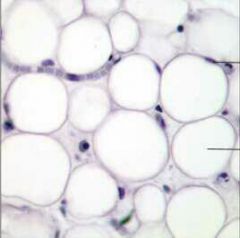
|
Adipose |
|
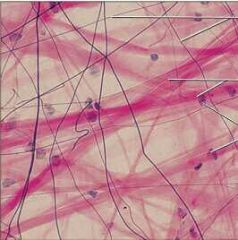
|
Areolar |
|
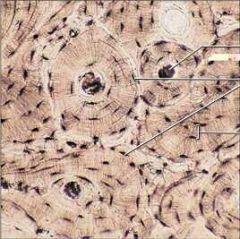
|
Bone (Osseous tissue) |
|
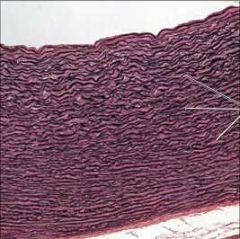
|
Elastic Connective |
|
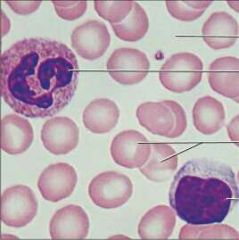
|
Blood |
|

|
Cardiac Muscle |
|
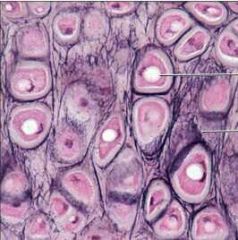
|
Cartilage Elastic |
|
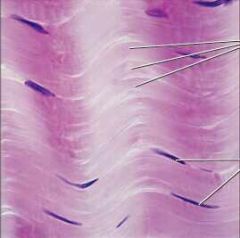
|
Dense Regular |
|
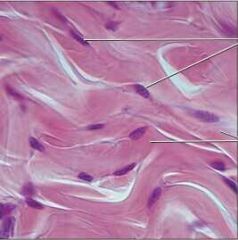
|
Dense Irregular |
|

|
Fibrocartilage |
|

|
Hyaline |
|
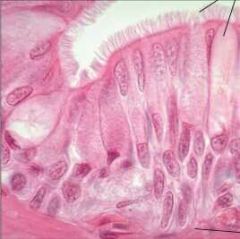
|
Pseudostratified Columnar Epithelium |
|
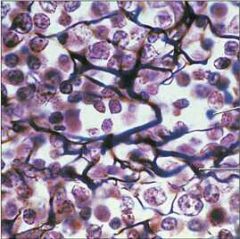
|
Reticular |
|
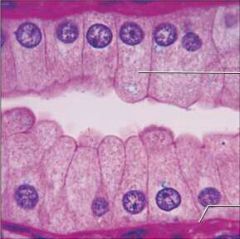
|
Simple Columnar Epithelium |
|
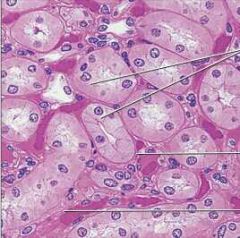
|
Simple Cuboidal Epithelium |
|
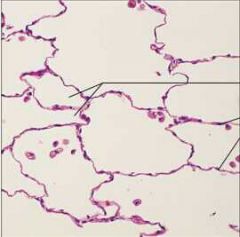
|
Simple Squamous Epithelium |
|
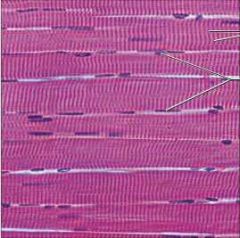
|
Skeletal Muscle |
|
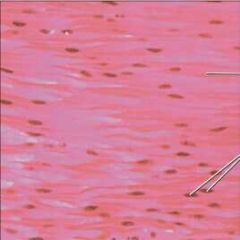
|
Smooth Muscle |
|
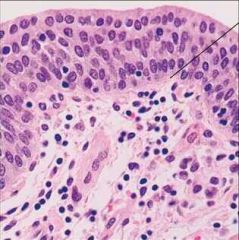
|
Stratified Columnar Epithelium |
|
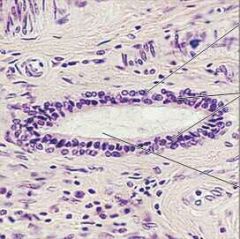
|
Stratified Cuboidal Epithelium |
|
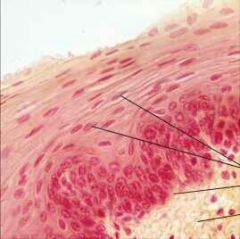
|
Stratified Squamous Epithelium |
|

|
Transitional Epithelium |
|
|
Function: *Provides reserve fuel *Insulates against heat loss *Supports & protects organs. |
Adipose |
|
|
Location: *Subcutaneous layer under skin *Around kidneys and eyeballs *In bones *In abdomen & breasts. |
Adipose |
|
|
Function: *Wraps & cushions organs *It's macrophages phagocytize bacteria *Big role in inflammation *Holds and conveys tissue fluid. |
Areolar |
|
|
Location: *Widely distributed under epithelia of body, e.g., forms Lamina Propria of mucus membranes *Packages organs *Surrounds capillaries. |
Areolar |
|
|
Function: Bone supports and protects (by enclosing); provides levers for the muscles to act on; stores calcium and other minerals and fat; marrow inside bones is the site for blood cell formation (hematopoiesis) |
Bone (Osseous Tissue) |
|
|
Location: Bones |
Bones (Osseous Tissue) |
|
|
Function: *Tensile strength with moderate elasticity |
Connective Elastic |
|
|
Location: *Ligaments connecting adjacent vertebrae (Ligamentum Nuchae) |
Connective Elastic |
|
|
Function: Transport of respiratory gases, nutrients, wastes, and other substances. |
Blood |
|
|
Location: Contained within blood vessels |
Blood |
|
|
Function: As it contracts, it propels blood into the circulation; involuntary control. |
Cardiac Muscle |
|
|
Location: The walls of the heart |
Cardiac Muscle |
|
|
Function: Maintains the shape of a structure while allowing great flexibility. |
Cartilage Elastic |
|
|
Location: Supports the external ear (pinna); epiglottis |
Cartilage Elastic |
|
|
Function: *Attaches muscles to bones *Withstands great tensile stress pulling force in 1 direction. |
Dense Regular |
|
|
Location: *Tendons *Most ligaments *Aponeuroses. |
Dense Regular |
|
|
Function: *Withstand great tensile stress pulling in many directions *Provides structural strength |
Dense Irregular |
|
|
Location: *Fibrous capsules of organs & joints *Dermis of the skin *Submucosa of digestive tract. |
Dense Irregular |
|
|
Function: Tensile strength with the ability to absorb compressive shock. |
Fibrocartilage |
|
|
Location: Intervertebral discs; public symphysis; discs of knee joint. |
Fibrocartilage |
|
|
Function: Supports and reinforces; has resilient cushioning properties; resists compressive stress. |
Hyaline |
|
|
Location: Forms most of the embryonic skeleton; covers the ends of long bones in joint cavaties; forms costal cartilages of the ribs; cartilages of the nose, trachea, and larynx. |
Hyaline |
|
|
Function: *Secretion (esp. mucus) *Propulsion of mucus if ciliated. |
Pseudostratified Columnar Epithelium |
|
|
Location: *Nonciliated: Large glands ducts & parts of male urethra. *Ciliated: trachea, most upper respiratory tract. |
Pseudostratified Columnar Epithelium |
|
|
Function: *Fibers form soft internal skeleton supporting other cells. |
Reticular |
|
|
Location: *Lymphoid organ: Lymph nodes, bone marrow, spleen |
Reticular |
|
|
Function: *Absorption *Secretion (mucus enzymes) |
Simple Columnar Epithelium |
|
|
Location: *Stomach to anal canal *Gallbladder *Excretory ducts of some glands |
Simple Columnar Epithelium |
|
|
Function: *Secretion *Absorption |
Simple Cuboidal Epithelium |
|
|
Location: *Kidney tubules *Ducts secretory areas of small glands *Ovary surface. |
Simple Cuboidal Epithelium |
|
|
Function: *Diffusion (gaseous exchange in lungs and blood vessels) *Filtration *Secretion (lubrication in serosae) |
Simple Squamous Epithelium |
|
|
Location: *Alveor in lungs *Kidney Glomeruli *Lining of heart (endocrodum) *Blood vessels (endothelium) *Ventral cavity serosae (mesothelium) |
Simple Squamous Epithelium |
|
|
Function: Voluntary movement; locomotion; manipulation of the environment; facial expression; volunary control. |
Skeletal Muscle |
|
|
Location: In skeletal muscles attached to bones or occasionally to skin. |
Skeletal Muscle |
|
|
Function: Propels substances or objects (foodstuffs, urine, a baby) along internal passageways; involuntary control. |
Smooth Muscle |
|
|
Location: Mostly in the walls of hollow organs |
Smooth Muscle |
|
|
Function: *Protection *Secretion. |
Stratified Columnar Epithelium |
|
|
Location: *Rare in the body *Small amounts in male urethra *Large ducts of some glands. |
Stratified Columnar Epithelium |
|
|
Function: *Protection |
Stratified Cuboidal Epithelium |
|
|
Location: *Rare in body *Largest ducts of sweat, mammory, & salivary glands. |
Stratified Cuboidal Epithelium |
|
|
Function: *Protects underlying tissues from abrasion. |
Stratified Squamous Epithelium |
|
|
Location: *Nonkeratinized: most linings of the esophagus, mouth, and vagina *Keratinized: epidermis of the skin. |
Stratified Squamous Epithelium |
|
|
Function: *Stretches readily to permit distension of uninary organ by urine. |
Transitional Epithelium |
|
|
Location: *Lines ureters, bladder, part of urethra. |
Transitional Epithelium |
|
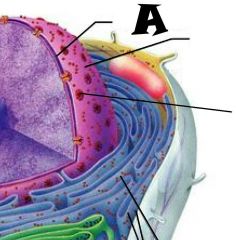
|
Nuclear envelope |
|

|
Chromatin |
|
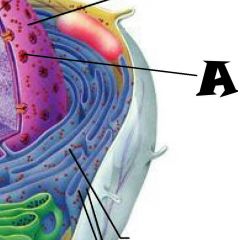
|
Nuclear Pores |
|
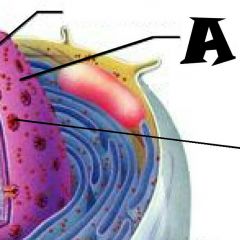
|
Nucleus |
|
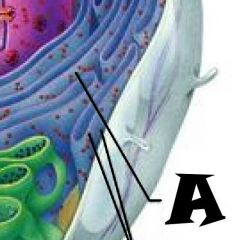
|
Rough Endoplasmic Reticulum |
|

|
Microvilli |
|
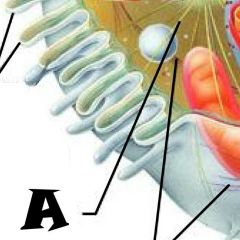
|
Microtubule |
|
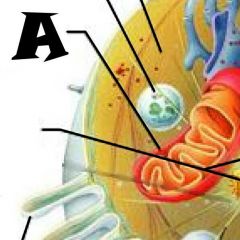
|
Mitochondrion |
|
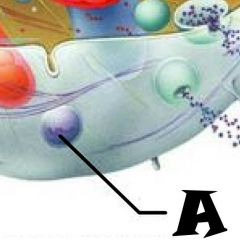
|
Pexisome |
|

|
Intermediate filament |
|
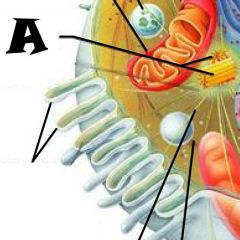
|
Centrioles |
|
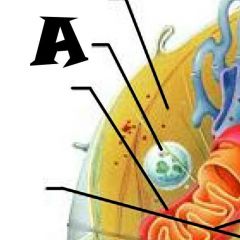
|
Lysosome |
|
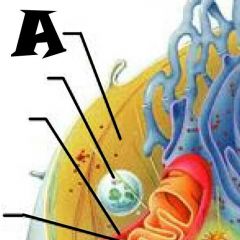
|
Cytosol |
|

|
Nucleolus |
|
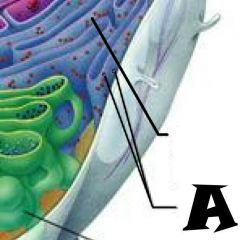
|
Ribosomes |
|
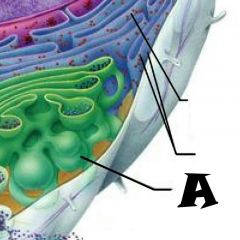
|
Golgi Apparatus |
|
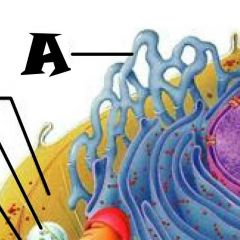
|
Smooth Endoplasmic Reticulum |
|
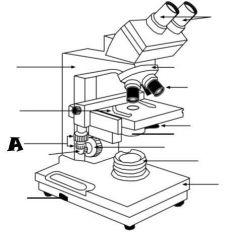
|
Mechanical Stage Control |
|
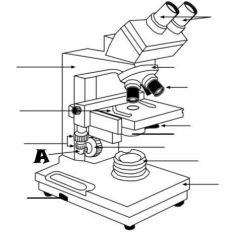
|
Fine Adjustment Knob |
|

|
Stage |
|
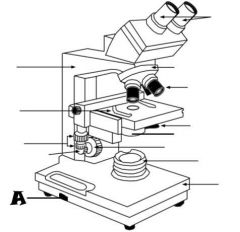
|
Light Control |
|
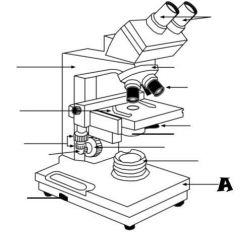
|
Base |
|
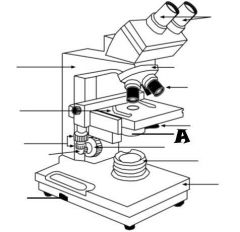
|
Condenser |
|

|
Light Source |
|
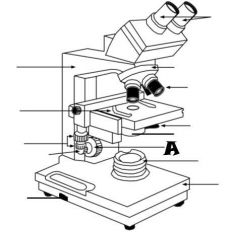
|
Coarse adjustment knob |
|

|
Revolving nosepiece |
|
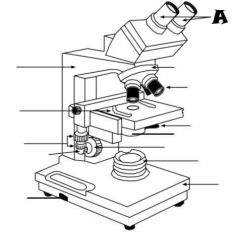
|
Oculars |
|
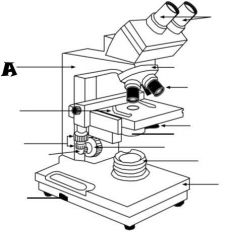
|
Arm |
|

|
Objective lenses |
|

|
Iris diaphragm lever |
|
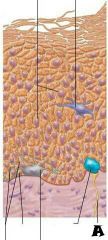
|
Sensory nerve ending |
|
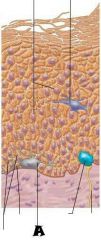
|
Melanocyte |
|
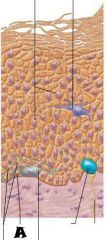
|
Melanin granule |
|
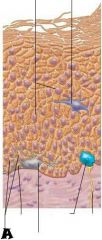
|
Desmosomes |
|
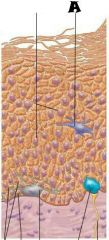
|
Dendritic cell |
|
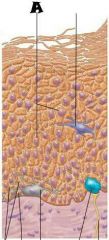
|
Keratinocytes |
|
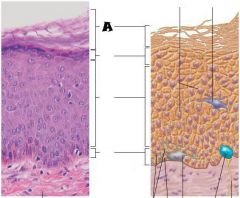
|
Stratum Corneum |
|
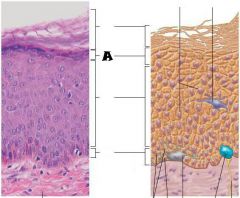
|
Stratum Grandulosum |
|

|
Stratum Spinosum |
|
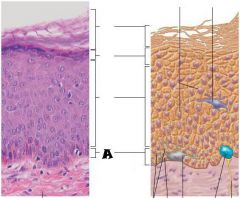
|
Stratum Basale |
|
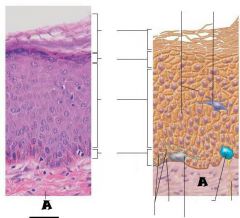
|
Dermis |
|
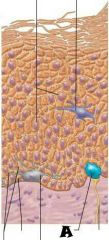
|
Tactile (Merkel) Cell |
|
|
Most superficial; 20-30 layers of dead cells, essentially flat membranous sacs filled with keratin. Glycolipids in extracellular space. |
Stratum Corneum |
|
|
One to five layers of flattened cells, organelles deteriorating; cytoplasm full of lamellar granules (release lipids) and keratohyaline granules. |
Stratum Granulosum |
|
|
Several layers of keratinocytes joined by desmosomes. Cells contain thick bundles of intermediate filaments made of pre-keratin. |
Stratum Spinosum |
|
|
Deepest epidermal layer; one row of actively mitotic stem cells; some newly formed cells become part of the more superficial layers. |
Stratum Basale |
|
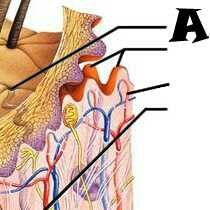
|
Pore |
|

|
Subpapillary plexus |
|

|
Arrector pili muscle |
|

|
Sebaceous (oil) gland |
|
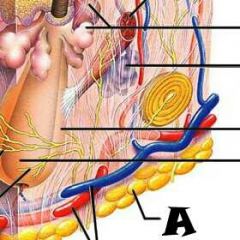
|
Adipose (fat) tissue |
|
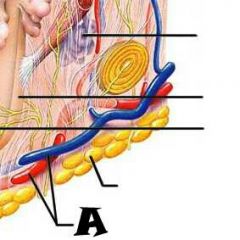
|
Cutaneous blood vessels |
|
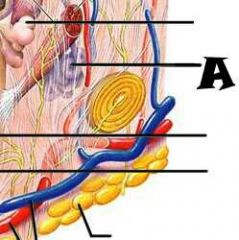
|
Eccrine sweat glands |
|

|
Hair follicle |
|
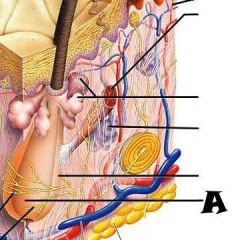
|
Hair root |
|

|
Dermal papillae |
|
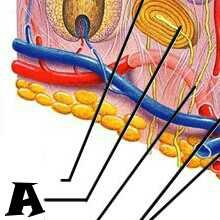
|
Lamellar corpuscle |
|
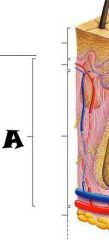
|
Dermis |
|
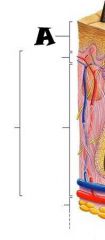
|
Epidermis |
|
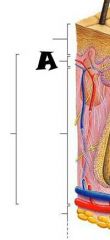
|
Papillary layer |
|
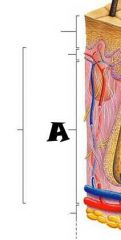
|
Reticular layer |
|

|
Hypodermis (subcutaneous tissue) |
|

|
Tactile corpuscle |
|

|
Sensory nerve fiber |
|
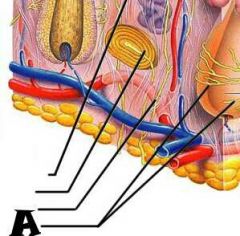
|
Hair follicle receptor |
|
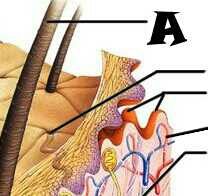
|
Hair shaft |
|
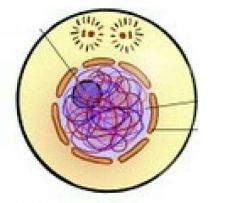
|
Interphase |
|
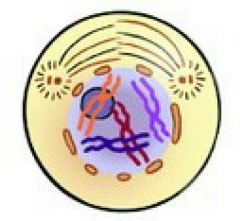
|
Prophase |
|
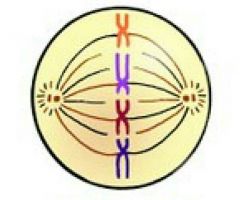
|
Metaphase |
|
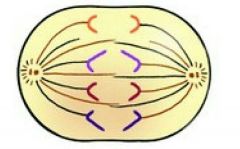
|
Anaphase |
|
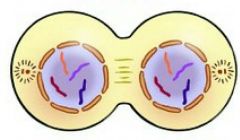
|
Telophase |
|
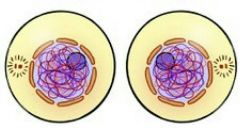
|
Interphase |
|
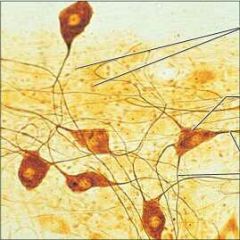
|
Nervous Tissue |
|
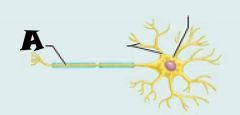
|
Axon |
|
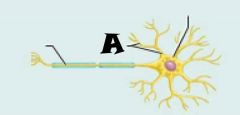
|
Dendrites |
|

|
Cell body |
|
|
Function: Transmit electrical signals from sensory receptors and to effectors (muscles and glands) which control their activity. |
Nervous Tissue |
|
|
Location: Brain, spinal cord, and nerves. |
Nervous Tissue |
|
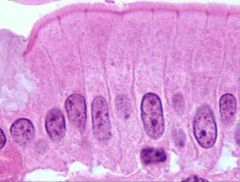
|
Simple Columnar Ciliated Epithelium |
|
|
Function: *Cilia propels mucus (or eggs) |
Simple Columnar Ciliated Epithelium |
|
|
Location: *Lining small bronchi *Uterine tubes, other uterine areas |
Simple Columnar Ciliated Epithelium |

